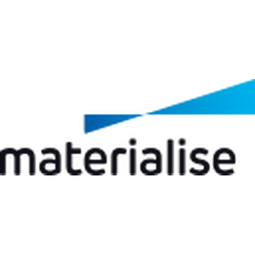
Technology Category
- Analytics & Modeling - Real Time Analytics
Applicable Industries
- Automotive
- Equipment & Machinery
Applicable Functions
- Quality Assurance
Use Cases
- Additive Manufacturing
- Inventory Management
Services
- Hardware Design & Engineering Services
- System Integration
The Customer
Hyundai Motor Corporation
About The Customer
Hyundai Motor Corporation is a globally recognized car manufacturer that focuses on producing cars with superior performance and safety. The company relies on 3D printing to create new products in a fast and cost-effective manner, and experiment with designs with almost no design limitations or material waste. However, managing their Additive Manufacturing (AM) production was a challenge due to the need to schedule different build jobs, maintain an overview of all build statuses, and ensure efficient information flow among all stakeholders.
The Challenge
Hyundai Motor Corporation, a world-renowned car manufacturer, was facing challenges in managing their Additive Manufacturing (AM) production. The company had to schedule different build jobs, maintain an overview of all build statuses, and ensure efficient information flow among all stakeholders. Previously, they relied on Excel sheets to manage the RP production status, which required frequent manual updates and dissemination of information. Tracking the number of parts produced, savings, and other operational data required manually generated reports. Machine operators also had to invest significant work hours to manually manage the operating plan for each machine and adjust and communicate the planning as soon as changes occurred.
The Solution
Hyundai Motor Corporation adopted Materialise Streamics, a production management system that gathers all kinds of information (order info, machine info, part info etc.) and automatically updates the production status in real time. The system also extracts customized reports about production, sales, management, and quality. When the production schedule changes, managers and machine operators can easily adapt the planning in real time. The information is no longer spread across a web of mails, excel files, phone calls, and data sheets, but stored in one central database that connects data preparation, production, post-processing and management. Everyone can view the production planning and status of each machine, and the requestor is automatically informed by the system once a build is completed.
Operational Impact
Quantitative Benefit

Case Study missing?
Start adding your own!
Register with your work email and create a new case study profile for your business.
Related Case Studies.

Case Study
Smart Water Filtration Systems
Before working with Ayla Networks, Ozner was already using cloud connectivity to identify and solve water-filtration system malfunctions as well as to monitor filter cartridges for replacements.But, in June 2015, Ozner executives talked with Ayla about how the company might further improve its water systems with IoT technology. They liked what they heard from Ayla, but the executives needed to be sure that Ayla’s Agile IoT Platform provided the security and reliability Ozner required.

Case Study
IoT enabled Fleet Management with MindSphere
In view of growing competition, Gämmerler had a strong need to remain competitive via process optimization, reliability and gentle handling of printed products, even at highest press speeds. In addition, a digitalization initiative also included developing a key differentiation via data-driven services offers.

Case Study
Predictive Maintenance for Industrial Chillers
For global leaders in the industrial chiller manufacturing, reliability of the entire production process is of the utmost importance. Chillers are refrigeration systems that produce ice water to provide cooling for a process or industrial application. One of those leaders sought a way to respond to asset performance issues, even before they occur. The intelligence to guarantee maximum reliability of cooling devices is embedded (pre-alarming). A pre-alarming phase means that the cooling device still works, but symptoms may appear, telling manufacturers that a failure is likely to occur in the near future. Chillers who are not internet connected at that moment, provide little insight in this pre-alarming phase.

Case Study
Premium Appliance Producer Innovates with Internet of Everything
Sub-Zero faced the largest product launch in the company’s history:It wanted to launch 60 new products as scheduled while simultaneously opening a new “greenfield” production facility, yet still adhering to stringent quality requirements and manage issues from new supply-chain partners. A the same time, it wanted to increase staff productivity time and collaboration while reducing travel and costs.

Case Study
Integration of PLC with IoT for Bosch Rexroth
The application arises from the need to monitor and anticipate the problems of one or more machines managed by a PLC. These problems, often resulting from the accumulation over time of small discrepancies, require, when they occur, ex post technical operations maintenance.

Case Study
Data Gathering Solution for Joy Global
Joy Global's existing business processes required customers to work through an unstable legacy system to collect mass volumes of data. With inadequate processes and tools, field level analytics were not sufficient to properly inform business decisions.







